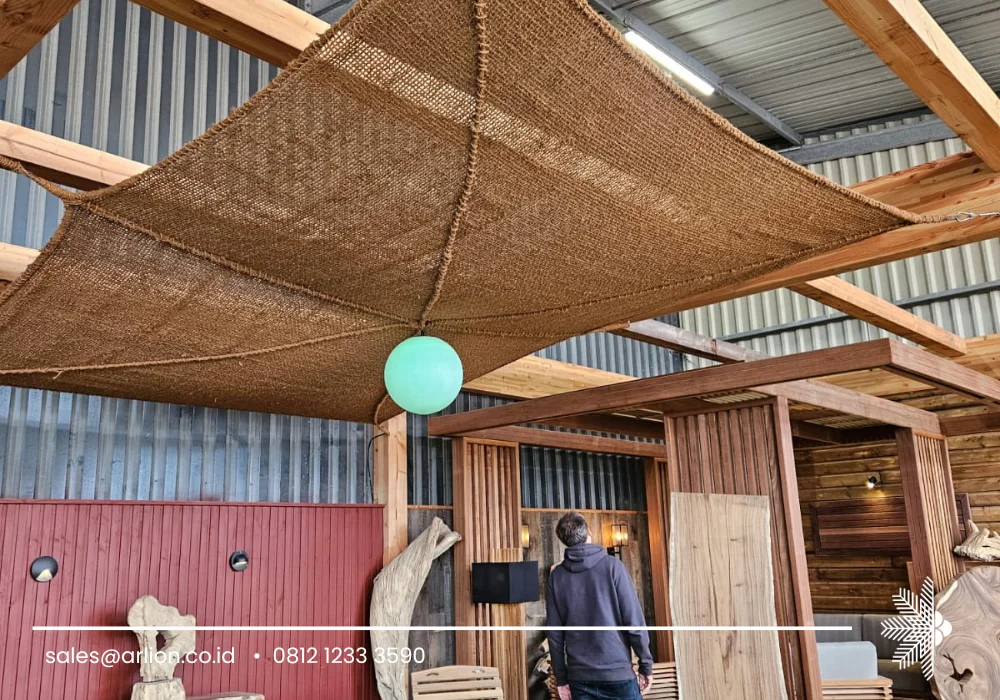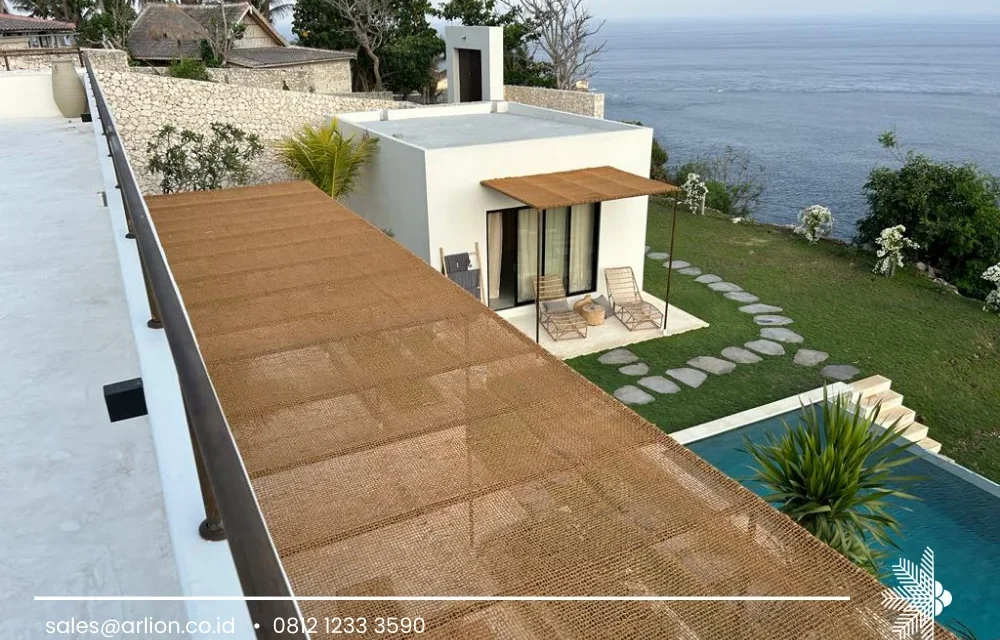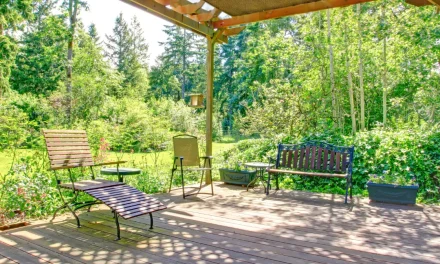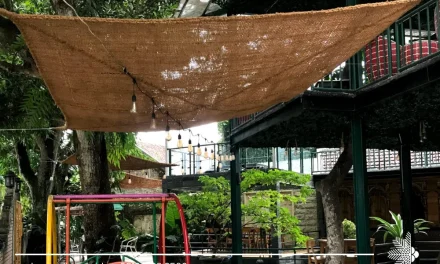Breathable coconut fiber canopy is becoming a major topic of discussion in modern sustainable construction, and the phrase breathable coconut fiber canopy must appear in the first sentence to meet the editorial criteria. This product is gaining attention globally because of increasing environmental concerns and the need for green building materials that offer both practicality and ecological benefits. The background of this movement comes from the growing demand for construction systems that reduce environmental damage, minimize carbon footprint, and utilize renewable natural resources. As industrial construction expands, many architects, engineers, and builders are pushed to adopt eco-friendly approaches, and natural fiber building materials are at the forefront of this innovation. Breathable coconut fiber canopy has emerged as an attractive solution that combines low environmental impact, functionality, and traditional craftsmanship, making it relevant for commercial, residential, and recreational applications.

Growing Adoption of Natural Fiber Construction
The construction industry has faced criticism over its heavy reliance on non-renewable materials such as plastics, metal alloys, and synthetic composites. These materials often have high embodied energy and can generate pollution from extraction through disposal. In response, natural fibers like coconut fiber have gained new appreciation thanks to their strength, flexibility, water resistance, and biodegradability. Breathable coconut fiber canopy products are developed from processed coconut husk, a material widely available in tropical regions and traditionally underutilized or discarded as waste. Instead of generating environmental burden, these fibers are now processed using modern manufacturing techniques to become durable building components.
The shift toward sustainable construction practices has led organizations, educational institutions, event venues, nature parks, and hospitality businesses to invest in breathable coconut fiber canopy systems. They are seen as a design statement that reflects environmental responsibility and awareness of green architecture principles. Construction consultants note that local authorities in several countries are also pushing for environmentally friendly infrastructure guidelines, which indirectly increase the use of renewable natural materials. The breathable coconut fiber canopy trend supports a circular economy model where raw materials can return to nature with minimal long-term ecological impact.
Why Coconut Fiber Is Suitable for Canopy Applications
Coconut fiber has several characteristics that make it suitable for canopies, roofing, and semi-permanent structures. It has natural elasticity, resilience, and UV resistance, and when woven properly, it allows air to circulate freely, forming a breathable coconut fiber canopy system that reduces heat buildup. In tropical climates, where humidity and sunlight are major environmental challenges, this makes coconut fiber especially valuable as a natural cooling solution. Unlike synthetic coverings, a breathable coconut fiber canopy does not trap heat, helping to reduce indoor temperature and improve airflow inside market stalls, lodge verandas, outdoor meeting areas, eco-resorts, and recreational spaces.
At the same time, coconut fiber’s durability ensures that structures remain functional even with prolonged exposure to sun and moderate rain. When properly treated and reinforced, it can last for years without major maintenance, providing a cost-effective and environmentally friendly alternative to plastics, tarpaulin, or aluminum roofing. Manufacturers often blend traditional hand-weaving techniques with modern weatherproofing processes to improve product life and consistency. These processes allow breathable coconut fiber canopy products to meet international quality standards while retaining their natural appearance and cultural relevance.
Market Expansion and Increased Commercial Use
The market for breathable coconut fiber canopy is expanding rapidly in regions where natural materials are already familiar to local culture. Southeast Asia, India, Pacific Island nations, and East African coastal communities are among the early adopters of these products. However, interest has recently spread to Europe and North America, particularly among businesses in the hospitality and tourism sectors. Resorts, beach clubs, theme parks, botanical gardens, and outdoor cafés are installing breathable coconut fiber canopy systems to attract visitors with a natural and eco-authentic aesthetic. Interior and exterior designers also recommend them for sustainable design themes in shopping centers, showrooms, and community parks.
Industry analysts expect demand to rise further due to architectural trends emphasizing biophilic design—creating buildings that promote psychological well-being and connection to nature. A breathable coconut fiber canopy supports this approach by incorporating organic textures, natural color tones, and ambient airflow that creates a calming environment. Some municipalities have even explored using coconut fiber structures in public spaces, such as playground shade systems, open-air libraries, or waterfront relaxation shelters.
Technical Advantages and Performance Features
A properly produced breathable coconut fiber canopy undergoes quality assessment to ensure strength and reliability. Testing includes tensile strength measurement, humidity tolerance, UV color fading checks, and fiber density analysis. Manufacturers may add natural treatment oils or environmental-grade coating to increase moisture resistance without reducing breathability. One major advantage of a breathable coconut fiber canopy is its ability to reduce heat without the need for electric cooling devices, contributing to energy savings and lower operating costs in hot-weather facilities.
Furthermore, coconut fiber is naturally resistant to pests, fungi, and sea salt corrosion, giving it an advantage in coastal environments. While maintenance is still required, especially for cleaning and occasional weather reapplication, its resilience makes it competitive with many synthetic coverings. This combination of natural qualities and modern engineering is a major reason for the rising popularity of breathable coconut fiber canopy solutions in both traditional and contemporary building markets.
Challenges and Industry Outlook

Despite significant advantages, there are still challenges to broader adoption. One is the availability of large-scale processing facilities capable of producing consistent fiber quality for export. Another is the need for global certification standards to support fair trade and international distribution. Additionally, some consumers are unfamiliar with natural fiber products and may mistakenly assume they are fragile or temporary. Educational campaigns, case studies, and real-world implementation portfolios are essential to change these perceptions.
Looking ahead, analysts predict that demand for sustainable building materials will increase worldwide as governments tighten environmental regulations and consumers push for sustainable product choices. With abundant coconut resources in many agricultural economies, breathable coconut fiber canopy products are expected to become an increasingly influential part of the global construction ecosystem. The product also aligns well with carbon reduction strategies, as the fibers store natural carbon throughout their lifetime before biodegrading cleanly at end-of-life.
For more information, interested parties may contact via WhatsApp at https://wa.me/6281212333590 or email sales@arlion.co.id through mailto:sales@arlion.co.id.





